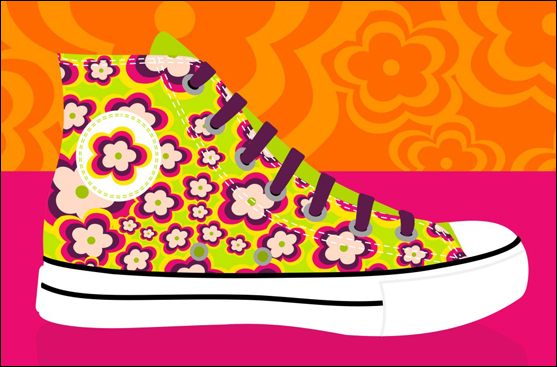
Enforcing gender stereotypes in the shoe department
Most of us are taught about gender from birth. The first question most people ask when a new baby is born is whether it is a boy or a girl. This information is so important to the identity of the child that everyone seems to inquire about this designation first and foremost in order to form an idea of who the newborn is.
What we expect in terms of gender-conforming behavior is also established early on by our culture. Distinct gender roles and expectations are supposed to provide a needed structure for our society by establishing commonly understood ways of functioning and interacting with one another. This is also consistent with the way we understand that preschoolers process information—by placing things (and people) into distinct categories that are already familiar to them.
Children’s clothing distributors and toy manufacturers aren’t alone in reinforcing this gender distinction of male/female. Children are regularly told to line up as boys or girls at school, must choose public toileting facilities based upon whether they are male or female, and are frequently treated differently based upon their perceived gender.
This has been a continuous struggle for me as a parent raising children as open-minded Unitarian Universalists, and I am not alone. Constantly having to counteract the messages of our culture, which communicates behavior expectations and binary gender conformity, can be exhausting.
This particular year it was even more blatant than usual. Although my son was immediately drawn to a pair of boots in his shoe size and reached to pull out the box, the sales clerk announced, “Those are for girls,” and quickly showed him where the boots for boys were.
“I think those boots are just fine, for girls or boys,” I countered immediately, but it was too late. My son is nine, and as such is already quite familiar with what is marketed for boys and what is marketed for girls. He also wouldn’t want to be caught dead at school wearing what other kids might think was too feminine for a boy to wear.
On the flip side, my teenage daughter is tall, and as such has large feet. Often too large to find women’s shoes in her size at many department stores. So we look at the boots in the men’s section and try to find a pair that doesn’t look like she’s working on a construction site.
I realize that stores don’t carry many women’s shoes or boots in her size because they don’t sell many of them, but why must so many of the snow boots marketed for men look like they accompany hard hats? Surely some men might like to find something sleek and a little shiny and still keep their feet warm? Why do we even have to make distinctions such as boots for men and boots for women? Why not just categorize them into different styles, such as boots for those who work outdoors, those who want something a little fancy, and those who are looking for something basic, perhaps in neutral colors?
With the upcoming arrival of spring, our ritual will continue as we search for school casuals for constantly growing feet—and in all likelihood, my frustration will continue. Until we can function in a society that does not hold binary views of gender conformity and preference, people who are transgender or even simply gender non-conforming will have to educate others on their preferences and their needs. After all, picking out a pair of shoes for your kids shouldn’t have to be an experience that challenges your personal values—even though so often it is.
Photo above ©minimil/iStockphoto







